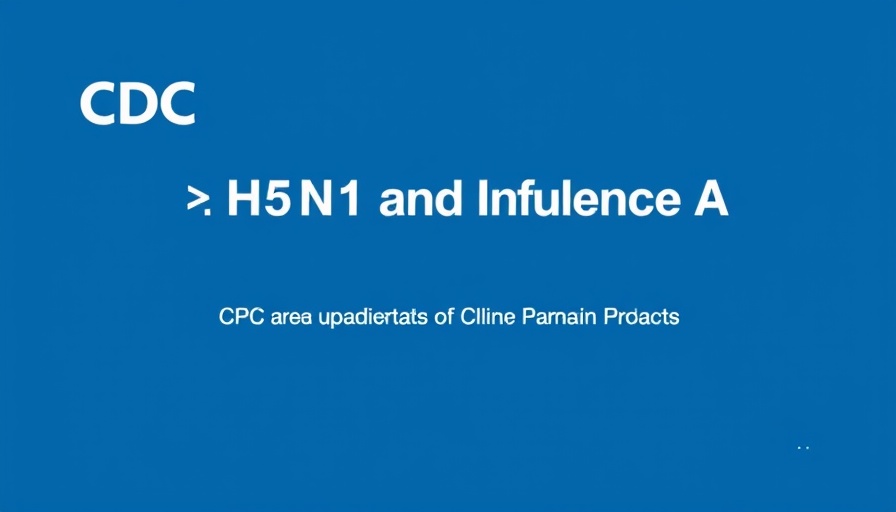
The Growing Concern of H5N1: An Update for Healthcare Professionals
As pulse rates race due to emerging threats in public health, the recent COCA Call on Human Cases of H5N1 has raised numerous important insights for healthcare professionals. The infectious H5N1 virus poses a continuous challenge as its spread among avian populations becomes intertwined with human health.
In COCA Call Clinician Update on Human Cases of H5N1, experts discuss critical insights about the transmission of H5N1 in humans and what it means for healthcare practices.
The Epidemiological Landscape of H5N1 Infections
The Centers for Disease Control and Prevention (CDC) reports that H5N1 viruses continue to circulate among birds, with spillover cases increasingly noted in mammals, including infected dairy cattle and poultry. Since the initial detection of this specific strain in the U.S. in late 2021, more than 169 million poultry have been affected across all states, leading to a critical assessment of the virus's implications on human health.
The Nature of Transmission: From Animals to Humans
Understanding the primary mode of transmission is crucial. The greatest risk for human infection arises from close, unprotected exposure to infected animals, particularly poultry and recently, dairy cattle. As highlighted by Dr. Tim Uyeki in the COCA Call, the first documented human case in the U.S. was reported in April 2023, with a notable number of cases resulting from direct contact with infected dairy cattle.
The Public Health Response: Vigilance and Preparedness
Public health agencies urge healthcare providers to remain vigilant. Monitoring and testing are essential actions that can enhance the early detection of H5N1 cases in humans. The CDC's recommendation emphasizes routine testing for influenza in symptomatic individuals, especially if they have relevant exposure history. This monitoring capacity is vital to mitigate potential outbreaks and manage public health risks effectively.
Clinical Manifestations of H5N1: A Spectrum of Illness
The clinical presentation of H5N1 infections varies significantly, ranging from mild upper respiratory symptoms to severe pneumonia. Early intervention, including antiviral therapy with Oseltamivir, is strongly recommended as part of the treatment protocol for suspected cases. In mild instances, home isolation and thorough symptom monitoring can prevent further spread.
Looking Ahead: What Does This Mean for Healthcare Professionals?
In conclusion, the insights provided during the COCA Call underscore the importance of continuous education for healthcare professionals on emerging zoonotic diseases such as H5N1. Staying informed about the clinical nuances, transmission dynamics, and appropriate public health responses aids in ensuring effective patient care and safeguarding community health.
As H5N1 continues to pose risks, healthcare providers must actively engage in monitoring and testing, fostering proactive responses to this evolving health threat. Remember, your role in the community is vital; stay alert, informed, and ready to act.
 Add Row
Add Row  Add
Add 




 Add Row
Add Row  Add
Add 

Write A Comment